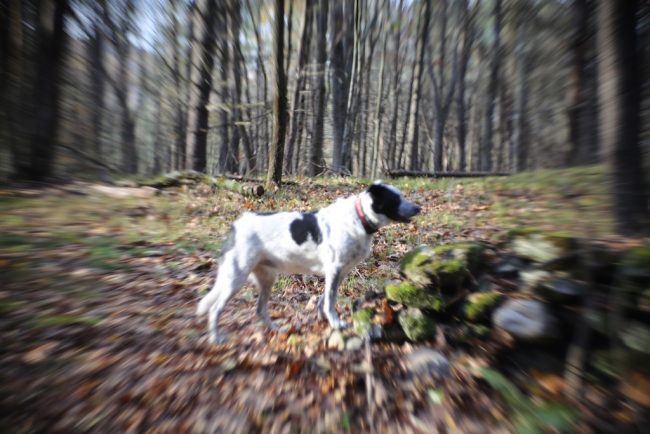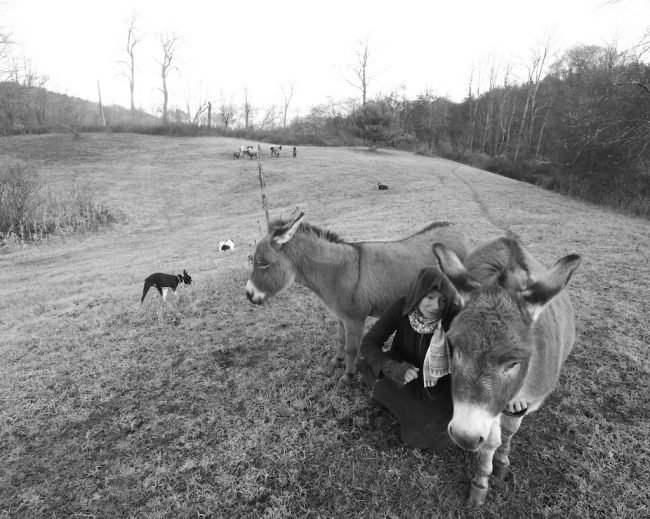
As long as humans have been living with and around animals, we have wondered about their inner lives, their emotions, what their boundaries are between instincts and conscience, whether or not animals experience love, grief and compassion in the same way that people do.
This is weighty and interesting stuff, it is the terrain that the German biologist Peter Wohllenben bravely and skillfully explores in his new book “The Inner Life Of Animals.”
You might know of him, he is also the author of the quite wonderful “The Hidden Life Of Trees,” published last year and written about many times here on the blog. It is a wonderful book.
In Wohllenben’s view – he has spent decades observing nature in forests and fields and pursuing the latest scientific research on how animals interact with the world.
According to him, animals feel shame, deer grieve, goats discipline their kids, ravens call their friends by name, rats regret poor choices, and butterflies, like Boomer parents, choose the best places for their children to grow up. He suggests animals share many of our emotions, and have complex inner lives.
I expect this book will be both fascinating and somewhat troubling for me, I am wary of scholars and researchers who claim animals have the same emotions that human beings do. No animal writer or academic researcher made much money by suggesting that animals are simple and predictable creatures, quite unlike us. Does anyone really know what the motives of a rat are, as distinguished from their genetics and instincts?
Do we really wish to lose that mystery?
I have never believed that animals have our kinds of emotions, or that they have complex inner lives. Living with them for some years, I am awed by their simplicity and adaptability. They live to survive. I have never seen an animal suffer separation anxiety, grieve like humans, or stop loving someone who feeds them and treats them well. We love to theorize about the, but we rarely want to look at our own emotions when it comes to animals.
I believe animals have plenty of emotions, but they are not our emotions. But I am always open to learning, and this writer is a natural teacher. I loved Wohllenben’s book on the trees, I go back to it often, and it has transformed my understanding of them, and the way I see them.
So I am much inclined to read his new book carefully and to be open to what he says.
I should be honest and say that I think animals are suffering greatly from our over-emotionalizing of them.
Animals like elephants and carriage horses are being slaughtered and endangered in mass by people who insist that they are just like us, and that they suffer from working with people or working at all.
Animals pay with their lives for this righteous ignorance, and I hate to further enable that. But I can’t think of a more compelling subject for animal lovers to explore.
I will share the book with you on the blog as I read through it. Wohlleben loves nature and the animal world, and he is a pleasure to read, he has a big heart and a wide open mind. His prose is clear and accessible, his sense of wonder is infectious.
I expect to be challenged reading this book and also to learn a lot from it.
In the first chapter, Wohllenben gets right down to it, he asks “Can animals really love us?”, or are we confusing instincts with emotions?
My experience with animals is that animals love those who feed and nurture them and give them attention and shelter.
It is not, in my mind, a conscious love as it is with human beings. It is fueled by powerful instincts of self-preservation and adaptation. If you take a border collie to sheep, they will love you, a Lab loves whoever feeds him, and so does Gus. Dogs are among the most fickle and adaptable of living things, they will love almost anybody who takes care of them, usually instantly.
Wohllenbeck doesn’t quite answer the question about animals loving us, he takes a scientific view of the question (he is a biologist) and explores the mother-child bond, “because this particularly strong kind of love is something we actually can trigger in animals..”
Shortly before a human child is born, Wohllenben writes, the hormone oxytocin flows through the mother’s system, which helps her develop a strong bond with her child. In addition, large quantities of endorphins are released, which dull pain and reduce anxiety. “This cocktail of hormones remain’s in the mother’s bloodstream after the birth of her child, ensuring that the baby is welcomed into the world by a mother who is relaxed and in a good mood,” he adds.
Love, for sure, but also genetics and hormones, just like animals. The human mother has a consciousness about what is happening, there is absolutely no evidence to suggest the mother animal has the same awareness. She is reacting, not thinking.
Sheep are extraordinarily devoted mothers, I’ve seen, but they are not like human mothers. If a sheep is separated from its lamb for even a few minutes, they will abandon it to predators or starvation and calmly ignore it’s desperate cries for help. A human mother who did that would be considered a monster and end up in jail. They are not like us.
“There’s a good reason most dogs and cats come to us as babies, ” writes Wohllenben, “because that removes the element of choice…” He concedes that it is difficult to prove that an animal truly loves a person of its own free will.
“Even my little chick, Robin Hood, had no real choice but to develop feelings for me,” he writes.
He also concedes that love is often as much about self-preservation as it is about emotions. “Some might argue that people simply project their emotions onto animals and see them reflected back. Their pets are substitutes for children they wish they’d had, partners they’ve lost, or friend who kept their distance.”
I am one of those people who might argue that, and often does.
We need to think of animals and pets as unconditionally loving creatures, it is something we need, not something they need..
We live in a fragmented and disconnected world and animals are increasingly being used to fill the gaps in our lives. Animals do love us, and some of them – pets – have learned how to manipulate us into loving and caring for them in deep and powerful ways. It is impossible for me to say that a creature totally dependent on us for food and shelter and survival is loving us out of free will and conscious choice.
That is just too big a stretch for me.
My dog’s love of me is great and enduring, but I do not ever fool myself in thinking it is personal or conscious, or the result of my wonderfulness. Millions of dogs are re-homed every year in our country, and almost all are very quick to love their new humans. That’s why they get to sleep in bed and raccoons don’t.
It isn’t that they don’t have emotions, rather it is that they don’t have our emotions.
And that’s the wire Wohllenben is already walking in the first chapter. I am excited to read this book, the author is asking all of the right questions. He is clearly drawn to the increasingly popular notion that animals are just like us. I’m not there.
But that doesn’t make the book any less compelling to read, and I am only two chapters into it. More to come.

